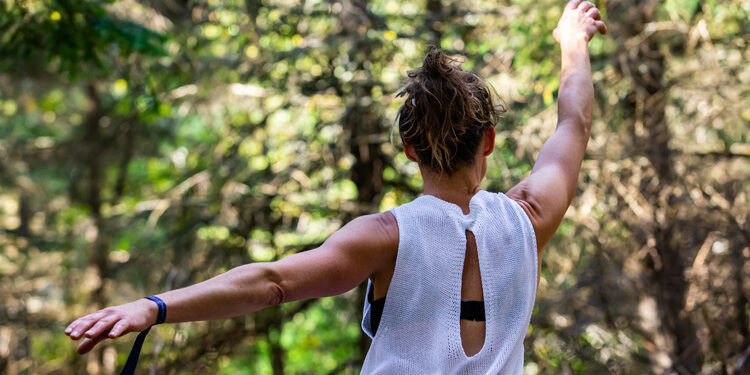We practice mindful movement with the same attitude that we bring to sitting meditation, without striving or forcing. We practice accepting our body as we find it, in the present, from one moment to the next”
Jon Kabat-Zinn
Whilst teaching QiGong at the Autumn Members Retreat, I was asked to recommend a book on Mindful Movement. I could not find one, all-encompassing, perfect book on Mindful Movement. Heather suggested writing one. And so, the seed is sown, which is very exciting, as mindful movement is a deep passion of mine.
I have been teaching Mindful Movement through Qigong, Tai Chi and Yoga for 9 years now. I worked out that I have spent more than 1848 hours training to teach these ancient arts. In addition have had a dedicated daily practice of at least two hours for 11 years amounts to a total of 10,000 hours (416 days) of the last 11 years of my life dedicated to Mindful Movement. I love Mindful Movement. It is a big part of my life. I learned to teach Qigong, Tai chi and Yoga before I discovered Mindfulness. When I began my mindfulness journey it only seemed natural to weave Movement and Mindfulness together. They are a complete union and for me they form a natural and important part of my being. Therefore, it is a delight to be able to bring them together with the Mindfulness Association on the new Stillness Through Movement programme.
Some people love doing Mindful Movement, but for others it’s a bit of a ‘Marmite’ thing. Some people find that out of all the Mindful practices there are, Mindful Movement presents some resistance and reluctance to the practices.
Have you ever noticed how you can walk from A to B and not remembered the journey? Mindful Movement can encompass all sorts of movement that we like doing. It isn’t limited to prescribed mindful movement sequences as part of a Mindfulness Course, nor is it limited to Yoga, Tai Chi or Qigong. Mindful movement is simply to be mindful of moving, whatever it is, whenever it is or wherever you are. Mindful movement can include walking, gardening, cycling, swimming… the list is endless. When you become aware of body sensations, feelings and thoughts in the present moment as you are moving, you are doing mindful movement. The important thing is to be kind to the body as we move and be in the moment throughout the journey.
Mindful Movement and The Masters Degree
I also included some Mindful Movement in the 8 week Mindfulness Based Living Course I shared with family carers as part of my research on the MSc Studies in Mindfulness. They learned a very simple, easy to do Qigong practice. They reported that the Qi Gong exercise helped them to feel “warm”, “more relaxed”, “loosened up” and “free”. One participant said that “It wasn’t until I did the Qigong did I notice the effect stress was having on my physical body. I realised thought has such a physical impact on my body….. If I can focus on pain with the intention of soothing it, it softens, and I can make the pain go away by focussing on it and allowing it to be there”.
During my research I found evidence that a short practice of Qigong:
- Reduces stress chemical cortisol (Tsang and Fung (2008 p.859)
- Reduces stress, anxiety, depression and blood pressure (Jahnke, Larkey et al, 2010)
- increases levels of serotonin and dopamine in the body, inducing calmness (Gaik, 2009)
- Improves sleep duration (Manzaneque, Vera et al 2009)
The Wisdom of the Body
The body is able to hold emotions, feelings, thoughts and also trauma. It feels to me like difficult emotions and traumatic events get vacuum packed inside my body. I know for a fact that ongoing stress caused me to have back pain and a stomach ulcer. Once I began training to teach Tai Chi and Qigong with Mindfulness I was able to see what was going on and use the practices to soften and relax around the pain.
How often do we pay attention to what the body is telling us? Have we ever felt sensations like butterflies in the stomach? Or something we know of as a ‘gut feel’? That sensation can manifest as a slight nagging feelings, or even anxiety or just a general sense of unease. It can be totally inexplicable and illogical. But sometimes I have used this sense to help me make a decision. I think of the ‘yes’ or ‘no’ aspects of a situation and notice how it feels in my body if I took the ‘yes’ route or the ‘no’ route. The majority of the time it turns out that one way just feels wrong in my body, and the other way – maybe nothing or maybe a tingling.
By paying attention to the body – knowing what’s happening while it is happening – we create the opportunity to change. Maybe we notice that we hunch our shoulders or hold ourselves tight when our boss calls us, or are worried about something. We might even notice thoughts and feelings are linked with body sensations.
So why movement?
Mindful Movement is meditation in motion. If we pay more attention whilst doing movements that are good for the body, we have an opportunity to be more mindful. During movement we can then become aware of any changes happening in the body.
We can also detect underlying striving and intellectualising and any sense of not being good enough.
We can then become armed – building more resources with necessary information to respond more mindfully and skilfully rather than reacting from our behavioural habits on autopilot
As we become more mindful of the body we can approach moving and sitting practice with full awareness, weaving the two together in our daily lives.
How can we practice Mindful Movement?
The practice is simple. Just be present in the body wherever it is, whatever it is doing. Also be aware of posture. Our posture, whether we are sitting, standing, laying down or moving contains our intention to be aware and present
The body houses our awareness shaped by stories, thoughts, memories, and emotions. By cultivating an attitude of kindness coupled with skilful action we have a choice.
Learning to listen to the unspoken language of the body with movement encourages the mind to break the cycle of thoughts.
Whenever we notice feeling uncomfortable in any way such as tired, agitated, restless, disinterested, or irritable we can transition this awareness into movement and notice what arises and manifests. We become aware of emotions through movement and aware of the body through movement. When we are mindful of the body moving in flow, whether it is yoga, tai chi, gardening, cycling or walking etc, the mind comes along. We can use it as a support for our formal and informal mindfulness practice.
To practice mindful movement there are three easy steps:
1.Notice what is happening in the body
2.Recognise what is on your mind- notice troublesome thought we cannot stop arising. Recognise the habitual patterns.
3.Accept that feelings and thoughts are impermanent and just passing through. Allow them to be in the space you are noticing. Allow yourself to feel what you feel.
If you find resistance – just notice how that feels with a sense of kindness to yourself. Breathe into the blockage or difficulty with a sense of softness.
If your mobility is limited, notice what movements you can do with ease. Qigong can be done seated and there is also Chair Yoga. You might want to capitalise on movements that are ok for you, even circling your arms, hands or feet, or flexing the wrists. Above all, allowing, acceptance and kindness are key to any mindfulness practice, still or moving, sitting, laying down or standing.
Stillness Through Movement
The Mindfulness Association 3 level Stillness Through Movement Programme was born from bringing mindfulness and movement together. The first level is Mindfulness Through Movement, where, using easy to do Qigong and Tai Chi sequences we become more aware of the moment-by-moment changes in the body as they arise through the movement. By integrating some of the Level 1 Mindfulness practices, such as Settling, Grounding and Resting and the Body Scan, we then become aware of sensations and how we are feeling while we are sitting or moving, as we sense energy, feelings, sensations and space in the body.
The second level, Compassion Through Movement, encourages us to cultivate a sense of kindness to the body through stillness and movement. We also go deeper into the body by sensing the 12 main meridian channels in the body and doing specific stretches, which are designed to work with the channels for the main organs. We deepen the Mindfulness, Qigong and Tai Chi practice by increasing the movement sequences and integrating Compassion practices from theMindfulness Level 2 – Responding with Compassion
Insight Through Movement, the third level, deepens the knowledge of the meridians and the Qigong and Tai Chi sequences. Combined with practices from the Mindfulness Association Level 3 Insight Training, this helps us to create the conditions for Insight to arise through movement. In particular, we work with the 12 main meridians which are the same energy centres and channels worked with Chinese Medicine and Acupuncture, and the 7 chakras in the body which are familiar in Yoga practice.
So the course has been created. Now for that book……..
“Movement is the unifying bond between mind and body and sensations are the substance of that bond”
Dean Juhan
Weekly Challenge
This week’s challenge is to bring full awareness to sensations in the body, feelings, thoughts and emotions as your body is moving. If the mind is busy and drifts off just notice that with kindness and guide the mind back to the sensations in the body. Notice how it feels and what comes into your awareness.
I’d love to hear how you get on so please do write to me at membership@mindfulnessassociation.net
Take care and hope you enjoy moving mindfully.
Warmest wishes
Jacky
Jacky is teaching the new Stillness Through Movement Course on 6th September 2022,
She has contributed a chapter to the Mindful Heroes Book entitled “Turning Empathic Distress into Compassion – A Hero’s Journey for Family Carers”. You can hear an extract from the chapter where she talks about the results of her MSc Studies in Mindfulness on Compassion & Family Carers. You can download a free sample of Jacky’s chapter here.


